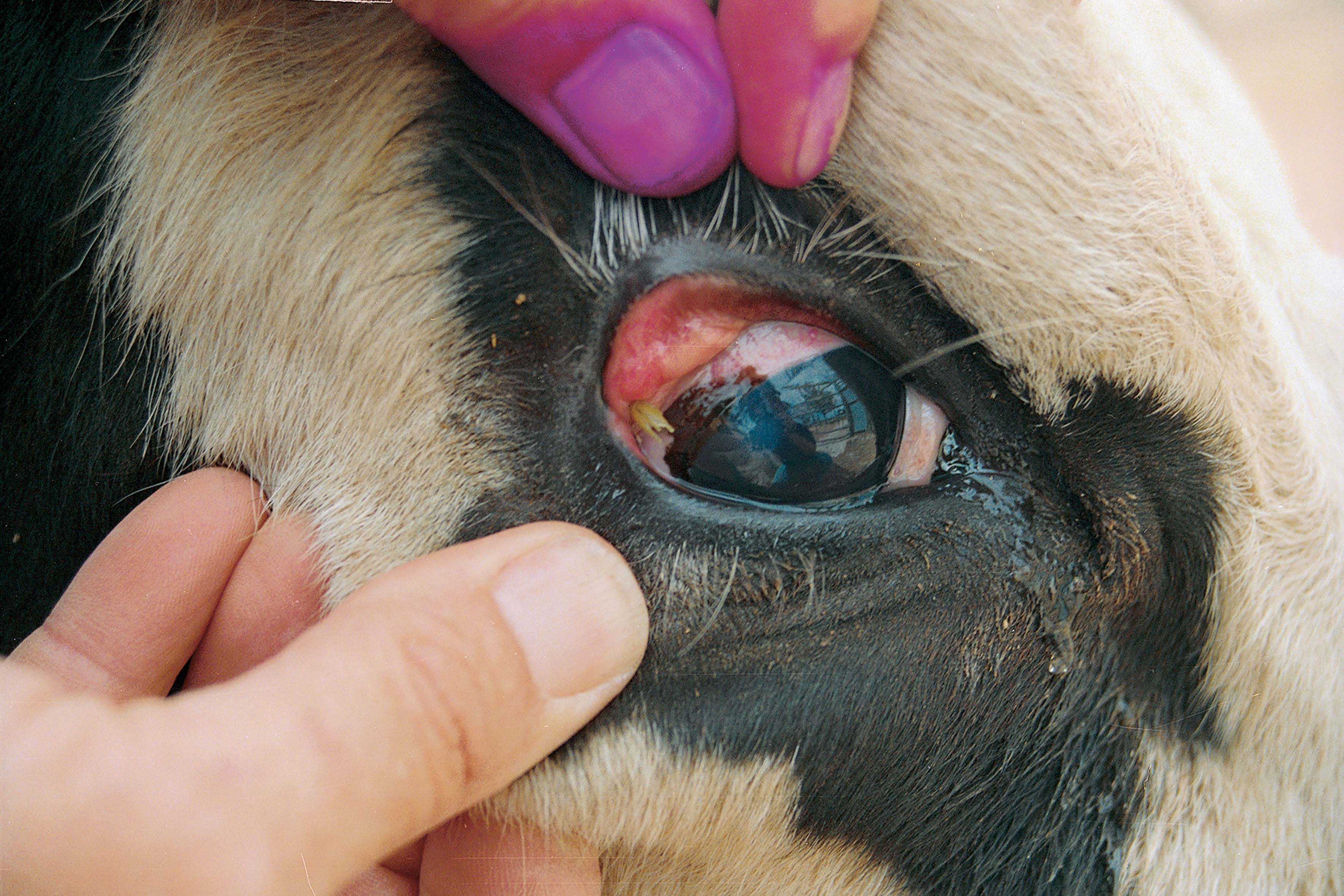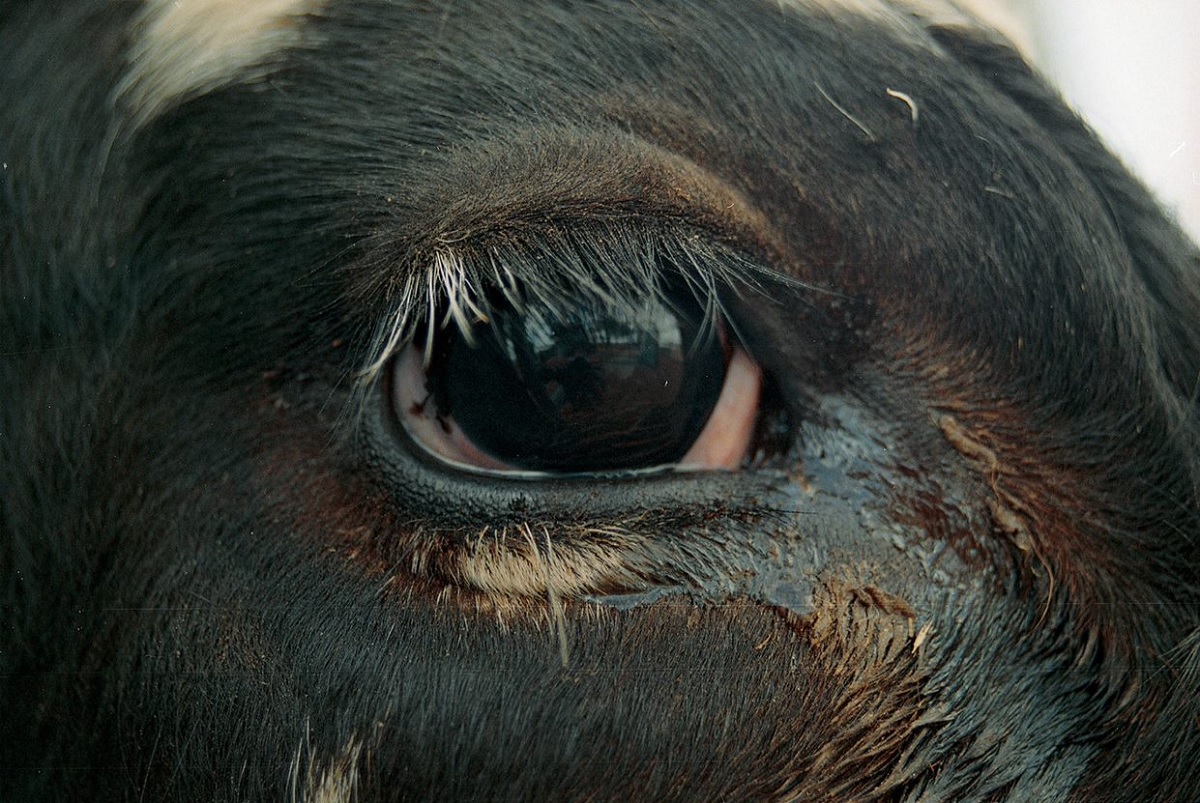Pinkeye
Infectious Keratoconjunctivitis, or Pinkeye, is a highly contagious bacterial infection causing inflammation and ulceration of the cornea that affects cattle, sheep, and goats.
Cattle under two years old are highly susceptible to pinkeye.
What causes pinkeye?
There are many factors that contribute to the development of the disease such as other microorganisms, immune status of the animal, eye irritation from dust, tall grass, or thistles, flies and ultraviolet light.
The disease starts out as increased tear production, progressing to a cloudy appearance on the surface of the eye (cornea), and further progressing to a swollen pink eye (increased blood vessels) with a yellow ulcerated centre.
Flies are attracted to the watery eyes, feeding on the infected secretions and then move from animal to animal, spreading the disease.
The bacteria produces a toxin that attacks the surface of the eye and the surrounding conjunctiva eroding the surface and leading to aggressive inflammation of the eye which can result in scarring, blindness and loss of the eye if left untreated.
The primary infectious agent causing pinkeye in cattle is bacterium Moraxella bovis.
In sheep and goats, pinkeye is caused by Chlamydia and Mycoplasma bacteria species.

This image shows Pinkeye caused by physical irritation from a sharp grass seed.
The infection can spread rapidly in the herd leading to impacts on the animal’s welfare, weight gains and milk production. Pinkeye can affect up to 80% of the herd with potential consequences including:
- blindness, which can lead to injuries
- loss of 3-5% of body weight
- decreased heifer fertility
- lower prices at sale and reduced selling opportunities
- increased labour to muster and treat as well as treatment costs.
Clinical signs of pinkeye
Early signs of Pinkeye are a watery discharge from the eye.
Increased sensitivity to sunlight (blinking)
The membranes around the eye become red and a white spot (ulcer) develops on the surface of the eye.
Affected cattle may show varying degrees of blindness in one or both eyes with excessive tear production.
The eyes will appear progressively more cloudy, inflamed and ulcerated.

Image showing wet stain from watery discharge caused by pinkeye.

Image showing advanced stages of pinkeye.
How to treat pinkeye in cattle
Treatment of pink eye involves topical antibiotics in the eye, injectable anti-inflammatories and sometimes injectable antibiotics, depending on the severity/stage of disease. A chat to your vet about which treatment option is the best for your situation is important. Covering the eye with patches can avoid further spread to other cattle, prevent further trauma to the eye and protect from ultraviolet light. In severe cases, surgery may be required to assist in healing the eye or to the remove the eye all together.
Early treatment and isolation of affected animals can help minimise the impact and prevent spread of disease to other animals. During an outbreak, it might be prudent to consider the benefits of pour-on fly repellents or insecticidal ear tags.
Avoid unnecessary yarding of livestock as this can exacerbate and spread disease. However, yarding will obviously be required to treat animals as treatment is important from both a disease spread and animal welfare aspect. This can be managed by wetting yards to reduce dust and minimising the time spent in the yards.
How to treat pinkeye in sheep and goats
The Mycoplasma bacteria generally involved in pinkeye in sheep and goats do not have a cell wall, so antibiotics that target bacterial cell wall synthesis are less likely to be effective.
There is no vaccine available for sheep and goats.
How to prevent pinkeye in cattle
Reducing the extent of environmental aspects of pinkeye development and spread includes fly control, thistle control and minimising yarding during dusty periods.
The pinkeye vaccine, Piligard®, is available for the prevention of pinkeye in cattle. The vaccine covers three of the seven strains of the pinkeye bacteria Moraxella bovis, and is a single dose vaccine that must be given 3-6 weeks prior to the start of the pinkeye season, usually late spring. It can be given to cattle as young as 2 weeks old.
When an outbreak occurs, prompt treatment and removal from the mob is crucial to prevent further spread to other cattle.
Other important mitigation strategies include:
- Avoid confining mobs of cattle to dry dusty yards, laneways or paddocks
- Avoid grazing paddocks with significant grass seed or thistle burden
- Identify, treat and isolate affected animals to reduce spread
- Consider fly control strategies – options include pour-on, in-feed or ear tag products, as well as environmental control strategies.
Adapted from content by district vets Kristy Stone, Eve Hall, and Jim Kerr.